LESSON 18: Life on the Edge: Valence and Core Electrons
88
THINK ABOUT IT
Lithium, Li, and sodium, Na, are both located in Group 1A on the periodic table because they have very similar properties. Both are soft, silvery metals that react with water. Both form compounds with chlorine in a 1:1 ratio—lithium chloride, LiCl, and sodium chloride, NaCl. What do lithium atoms have in common with sodium atoms that make them behave similarly?
Why do elements in the same group in the periodic table have similar properties?
To answer this question, you will explore
Electron Shells
Patterns in Atomic Structure
Valence and Core Electrons
Electron Shells
EXPLORING THE TOPIC
Electron Shells
Recall that elements that are grouped together in columns on the periodic table share similar properties.
CONSUMER CONNECTION
CONSUMER
CONNECTION
Lithium (Li) ion batteries are rechargeable and commonly used in electronic devices.
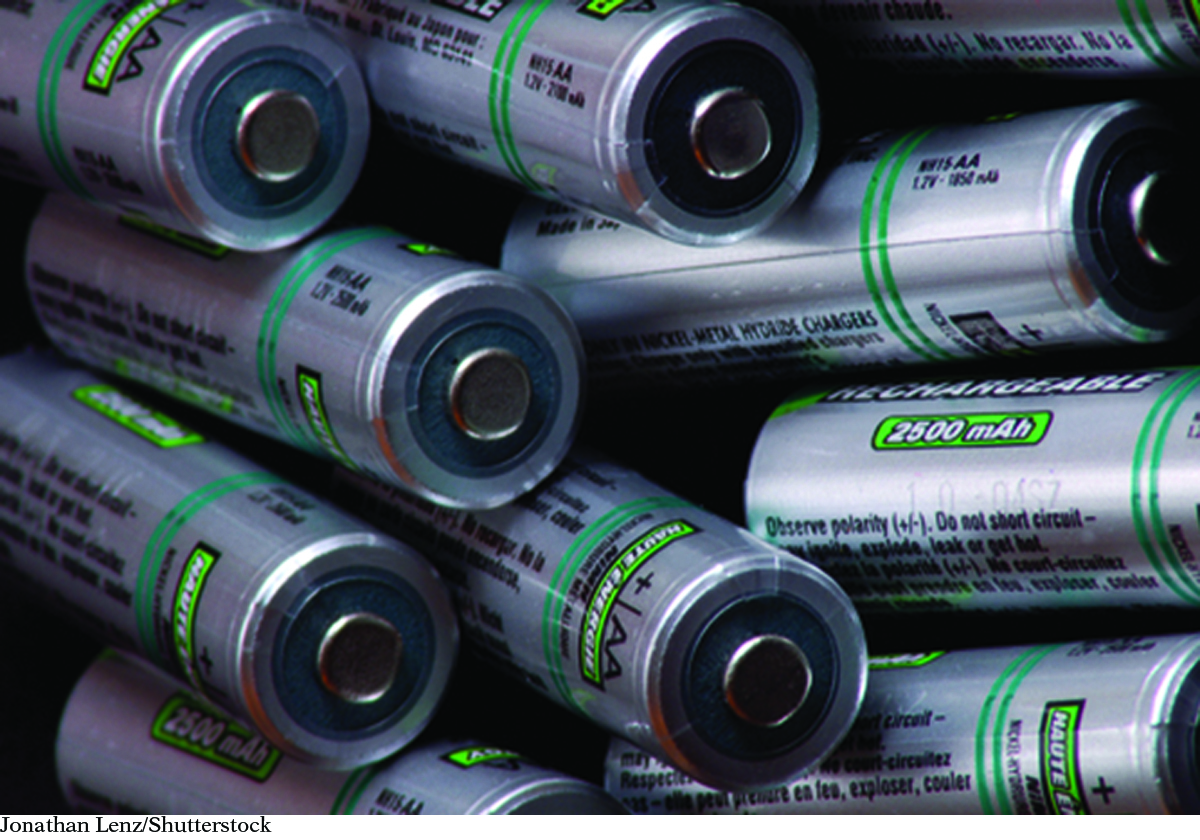
Consider lithium, Li, and sodium, Na, from Group 1A on the periodic table. You can get the following information from these two element squares on the periodic table:
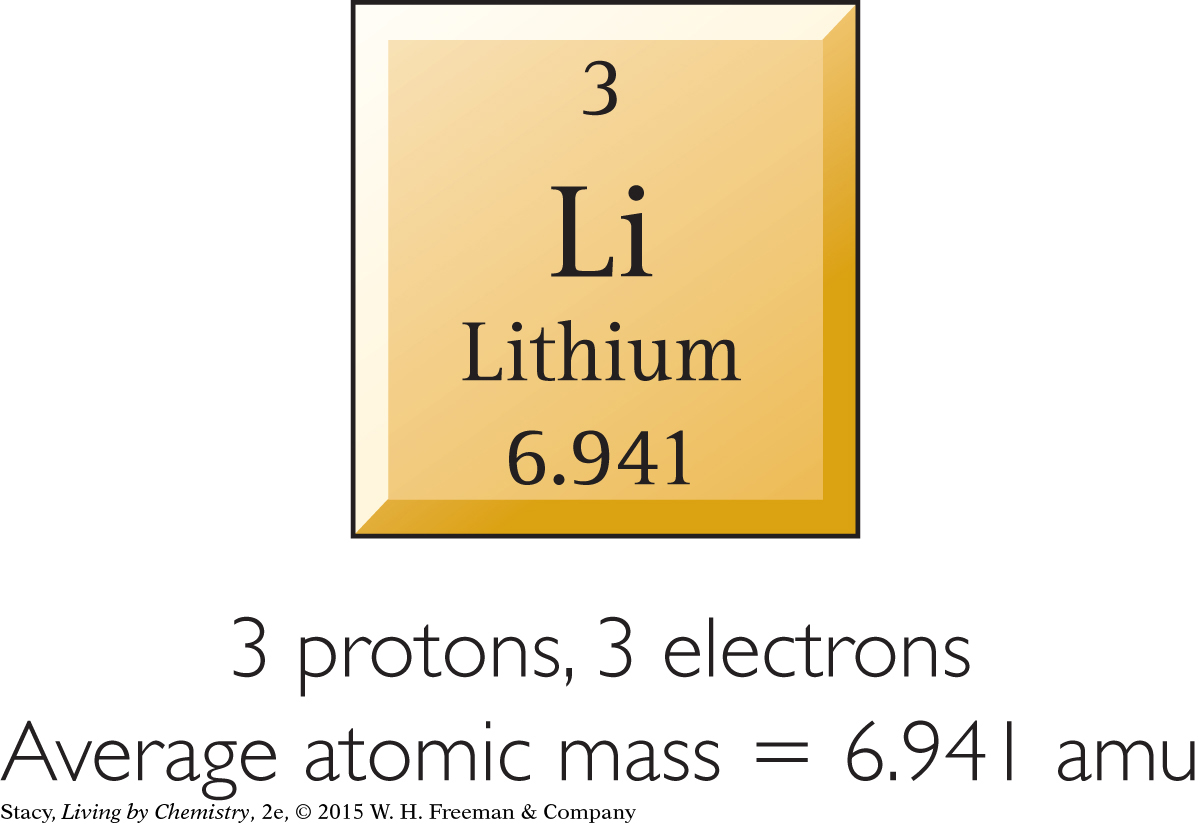
|
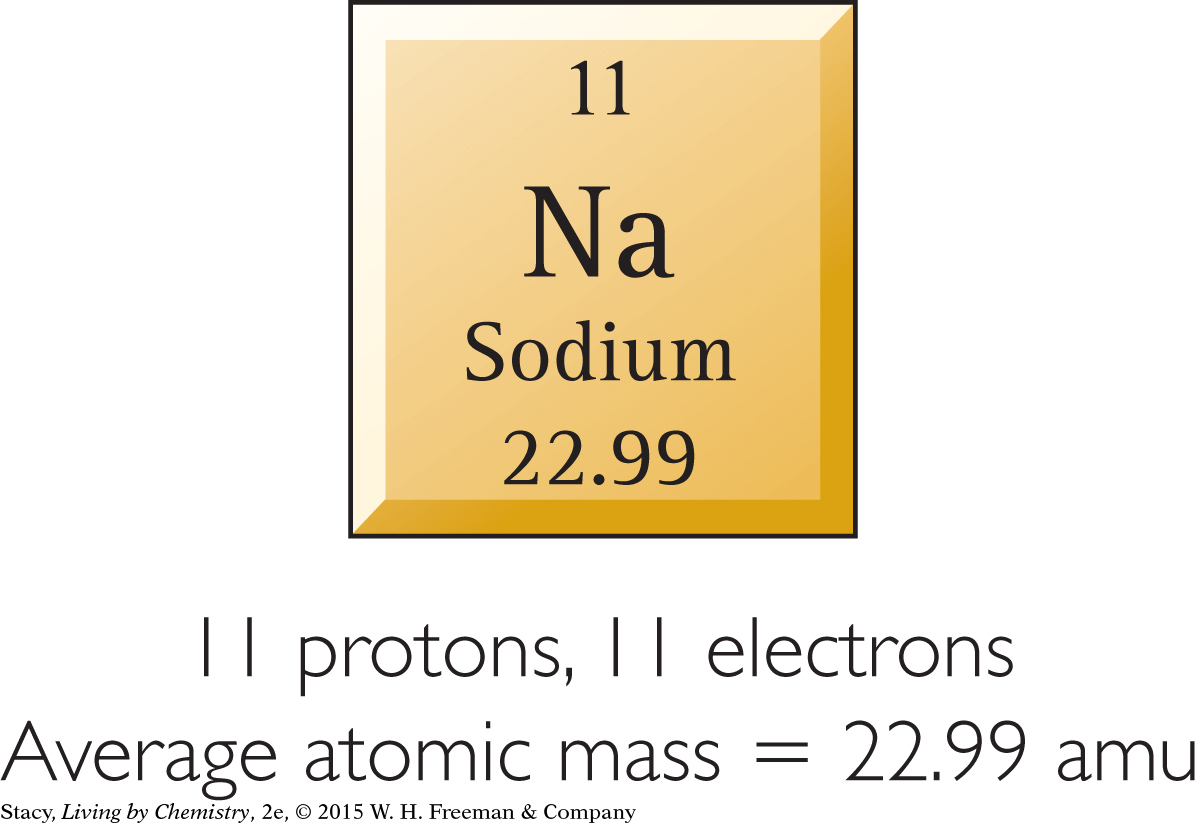
|
This basic information doesn’t provide any evidence of similarities between atoms of lithium and atoms of sodium. However, examining the structures of these atoms in more detail reveals some patterns.
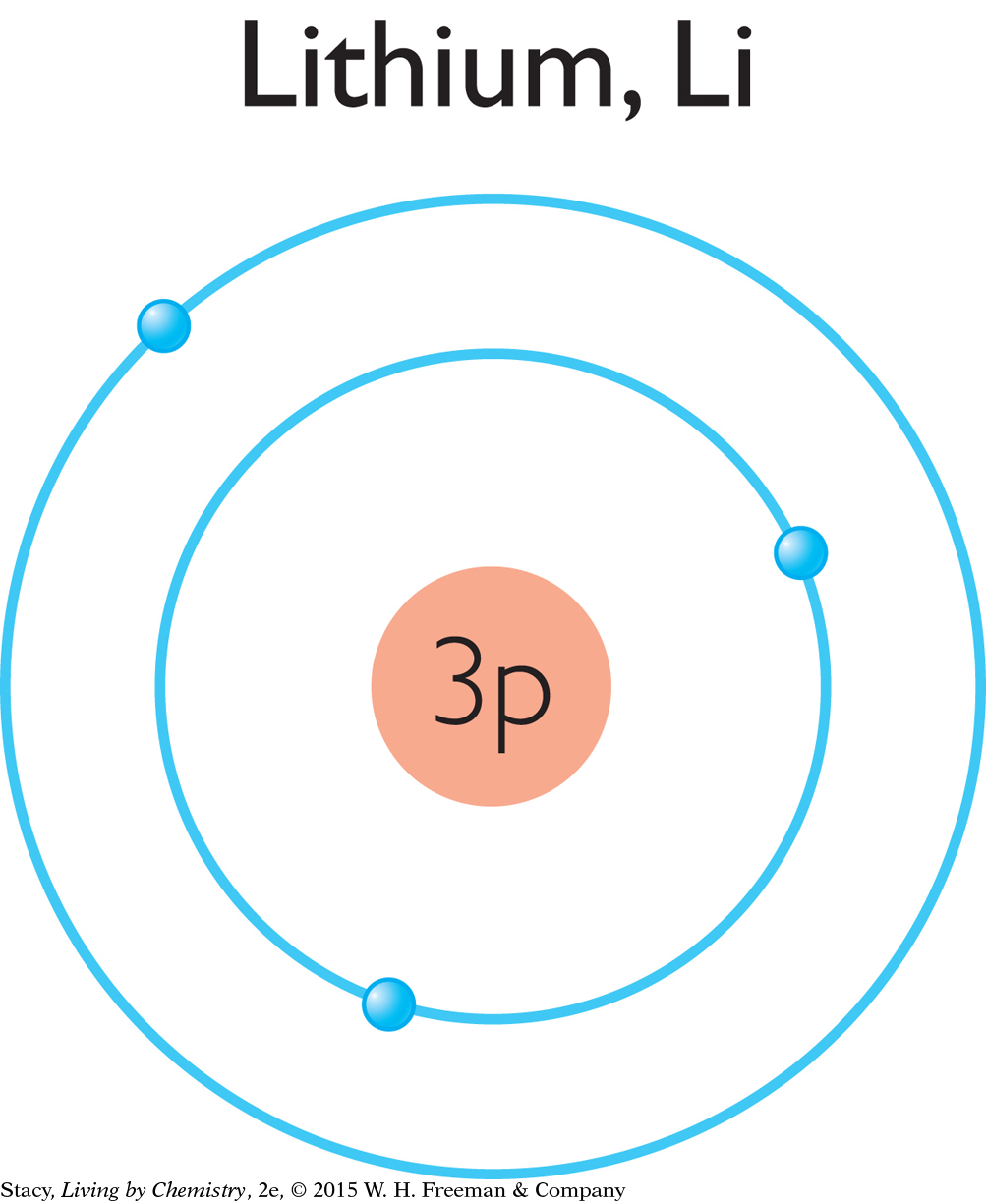
|

|
89
Important to Know
Although electron configurations are easier to draw in two dimensions, keep in mind that atoms are not flat. Electron shells are really surfaces of spheres. Each model is useful in understanding different aspects of the atom.
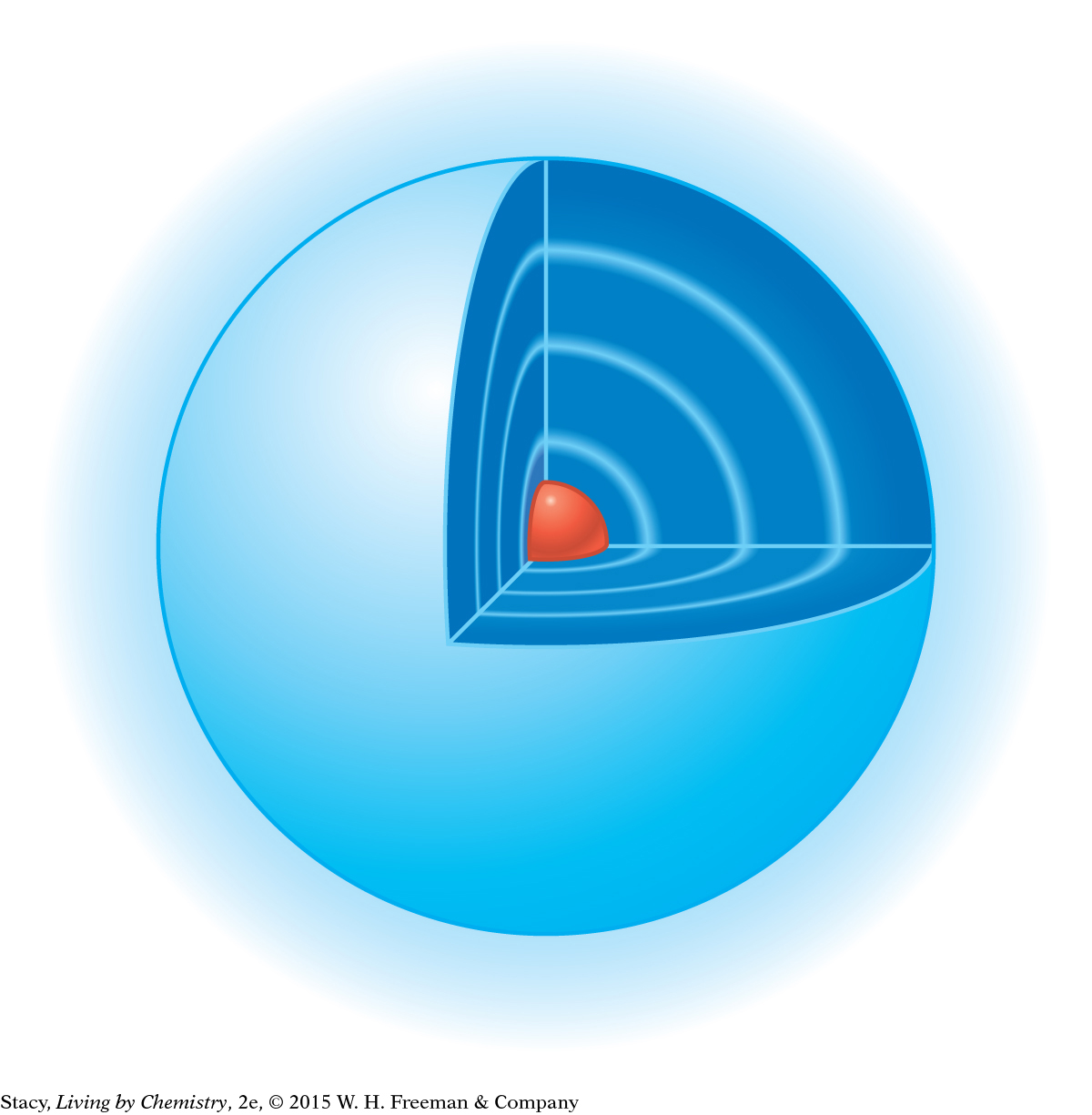
In these models, the electrons are shown orbiting in concentric circles around the nucleus. Chemists call these circles electron shells, and these atomic models are called shell models.

Lithium has a total of three electrons in two shells. Sodium, on the other hand, has a total of 11 electrons in three shells. But the atoms of both elements do have one thing in common: a single electron in their outer shells. If this feature is responsible for the similar properties of lithium and sodium, you would expect the atoms of the other elements in the same group to also have a single electron in their outer shells.
The atoms of two more Group 1A elements are shown in the illustration. Compare the models of hydrogen and potassium with those of lithium and sodium. The pattern holds: Each of the Group 1A elements has one electron in the outer shell of its atoms. This pattern also extends to other Group 1A elements not shown here, such as rubidium and cesium.
Patterns in Atomic Structure
Patterns in Atomic Structure
Examining the shell models of elements beyond lithium on the periodic table reveals further patterns in the outermost electrons. Shell models for the first 14 elements are shown in this illustration. A repeating pattern emerges from the diagram.

Starting with lithium, notice how the number of electrons in the outer shell repeats in a regular pattern, going from one to eight and then starting over again.
90
When these electron shell models are organized according to the periodic table, even more is revealed. Examine this table. The atoms in the first row, or Period 1, have only one shell. The atoms in Period 2 have two shells. The atoms in each new period of the periodic table have an additional electron shell.
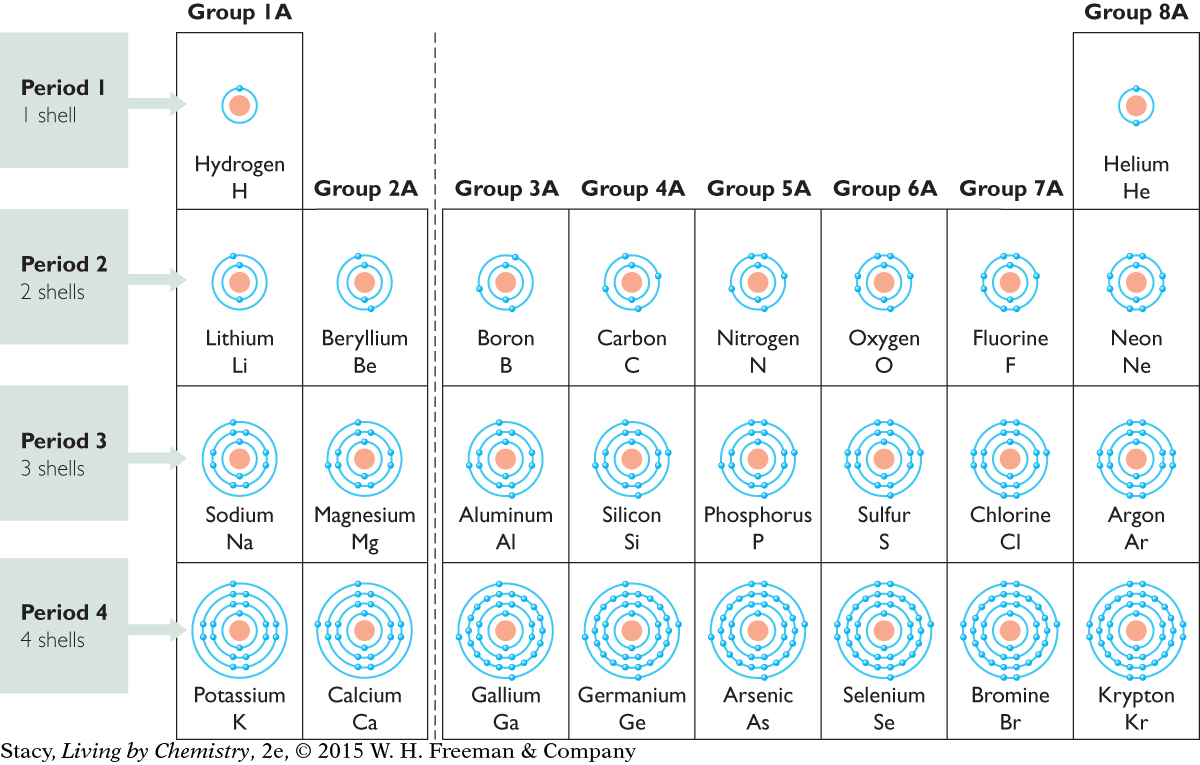
It turns out that for main group elements, Groups 1A through 8A, everything you need to know about the placement of an atom’s electrons can be decoded from the periodic table.
Big Idea
Big Idea
The arrangement of elements on the periodic table reflects the arrangement of electrons in the atoms of those elements.
In the first column of the table, every element has one electron in its outermost electron shell. In the second column, each has two electrons in the outermost shell, and so on. In the eighth column, each element has eight electrons in its outermost shell. This feature turns out to be the key to many of the properties of the atoms.
Valence and Core Electrons
Valence and Core Electrons
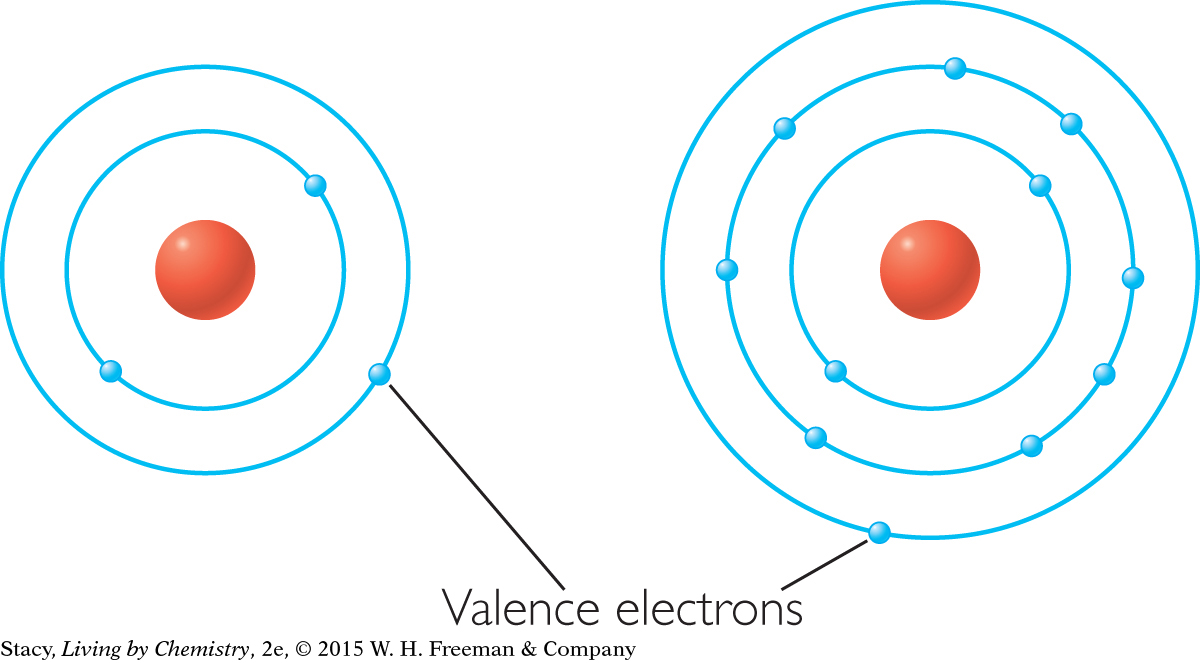
The outermost shell that electrons occupy is very important in chemistry and is referred to as the valence shell. The electrons in that shell are called the valence electrons. The electrons that are located in all of the inner shells are known as core electrons.
91
For main group elements, the number of electrons in the valence shell corresponds to the group number on the periodic table. So, every Group 4A element has four electrons in its outermost shell, while every Group 8A element has eight electrons in its outermost shell.
Elements with the same number of electrons in their outermost shells have similar properties. In other words, elements with the same number of valence electrons have similar properties.
Example
Sulfur Atoms
Find the element sulfur, S, on the periodic table.
What group is sulfur in?
How many valence electrons does a sulfur atom have?
Explain why selenium, Se, has properties similar to those of sulfur.
Solution
Sulfur is not a metal, so it is located toward the right side of the periodic table.
Sulfur is in Group 6A of the periodic table.
The number of valence electrons is the same as the group number, so sulfur has six valence electrons.
Selenium, Se, is also in Group 6A. Even though it has many more total electrons than sulfur has, selenium also has six valence electrons. This is why sulfur and selenium have similar properties.
LESSON SUMMARY
LESSON SUMMARY
Why do elements in the same group in the periodic table have similar properties?
KEY TERMS
valence shell
valence electron
core electron
Elements that are grouped together in columns on the periodic table share similar properties. For main group elements, atoms in the same group have the same number of electrons in their outermost shells. The outermost shell is called the valence shell, and the electrons in that shell are called valence electrons. Electrons in the inner shells are called core electrons. The number of valence electrons in an atom of a main group element corresponds to the element’s group number. So, the periodic table is a direct reflection of the atomic structures of the atoms.
Exercises
Reading Questions
How can you determine the arrangement of an element’s electrons from its position on the periodic table?
If you know what group an element is in, what can you predict about its electron arrangement?
92
Reason and Apply
What do beryllium, Be, magnesium, Mg, and calcium, Ca, all have in common?
Draw a shell model for boron, B. Identify the core and valence electrons.
For main group elements, how does the number of core electrons vary across a period?
Consider the elements carbon, C, and silicon, Si.
How many electrons does an atom of each of these elements have?
Draw shell models for atoms of each of these elements.
How many valence electrons do atoms of each of these elements have?
How many core electrons do atoms of each of these elements have?
Why are the properties of carbon and silicon similar?
Provide the following information for element number 17. For each answer, explain how you know.
the element’s name, symbol, and group number
the number of protons in the nucleus
the number of neutrons in the nucleus
the number of electrons in a neutral atom of the element
the number of electrons that are valence electrons in a neutral atom
the number of electrons that are core electrons in a neutral atom
the names of three other elements with the same number of valence electrons
Answer Exercise 7, parts a through g, for element number 50.
If an element is located in Group 4A of the periodic table, what can you conclude about atoms of this element?
It has four valence electrons.
It has four electron shells.
It has four core electrons.
It has properties similar to carbon.
Both A and D.
What do the elements in Period 3 have in common?
Their atoms have the same number of valence electrons.
Their atoms have the same number of electron shells.
Their atoms have the same properties.
None of the above.